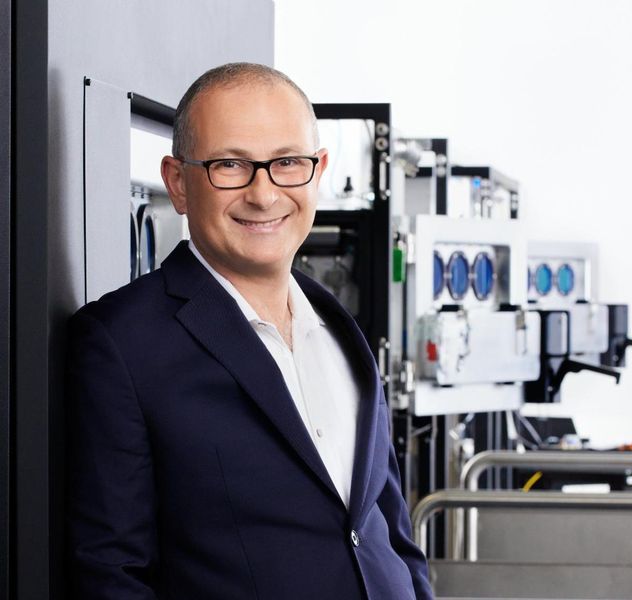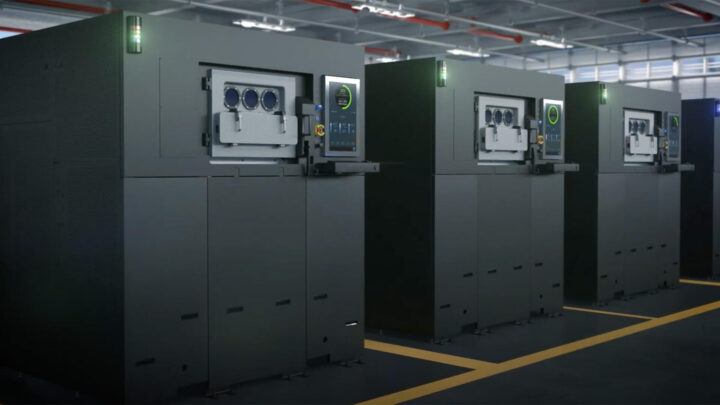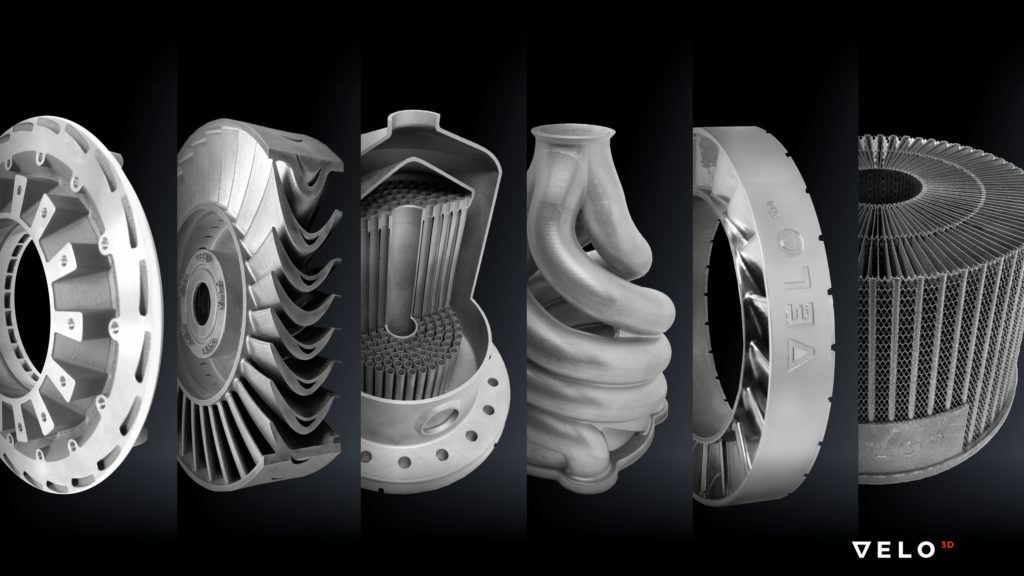VELO3D (NYSE: VLD) went public today with the company listing on the New York Stock Exchange (NYSE) under the ticker symbol “VLD”. The company merged with JAWS Spitfire Acquisition Corporation and now has $274 million to play with to expand. We interviewed VELO3D CEO Benny Buller to find out more. At fist glance, Benny didn’t seem particularly ecstatic about this major milestone. He was, it turned out, laser-focused on next steps.

VELO3D Founder and CEO Benny Buller. Image courtesy of VELO3D.
“The only thing I’m thinking of right now is how we finish the quarter, how we grow next quarter, how we complete the products we are working on. If the question is: is the glass half empty or half full, I can only see the empty glass. I’m entirely focused on that. I’m a bit of a party pooper really. I did have moments of joy when I saw that we had $300 million in the bank, but I’m more about moving the company forward.”

VELO3D Sapphire 3D printing factory. Image courtesy of VELO3D.
The firm now has substantial funds to address his concerns and drive the firm forward. Buller explained his plans for how it would be used.
“We’re not going to spend most of it. What we do spend will be spent on scaling up sales and marketing. Our strategy is not reliant on acquisitions. We may do an acquisition, if the right opportunity comes along, but its not a focus area. Instead we are looking for organic growth. So we will expand to a new manufacturing site and start up new offices in Europe and Asia. We’re going to be opening offices first in Germany and then in Singapore.”
Buller suggested that Germany, specifically Bavaria, was a real center for 3D printing due in large part to the high quality of local industry, which is particularly relevant to VELO3D. For that reason, the company will establish its European headquarters and tech center in Augsburg as the base for a massive European expansion, with the German market expected to be important to the company. Similarly, Singapore will act as VELO3D’s foothold for growth in Asia. The company is currently seeking qualified employees to fill sales, technical sales, application engineering, service engineering and marketing roles across its locations.
However, anchoring its growth, according to Buller, is making part costs as low as possible for VELO3D clients.
“The single most important goal [of ours] is to reduce part cost for the customer,” Buller said. “That’s my most important metric. We also have to demonstrate quality and drive more complex geometries so the customer can make more. The ability to produce new geometries is important, along with adding new materials. We are pushing very hard to increase quality, to narrow the distribution of errors, and have fewer failure modes. We’re also going to be improving failure mitigation and failure reporting because it is important to know why you’ve had a failure.”
VELO3D will be introducing universal material quality specifications for any and all of its systems. These criteria will be applied to all of the firm’s material suppliers. These calibrated specifications are meant to provide customers information about what they can expect from a material.
“This will let customers get started faster and let them focus on cost and productivity. We really anticipate that, [over the next few years], this will let us drive costs down and scale up production,” Benny said.

VELO3D builds support free metal AM parts. Image courtesy of VELO3D.
VELO3D is unique in that it has a very tight focus on a few applications, where it aims to sell many machines to key customers. Specifically, this means areas where flow, whether it be fluids and/or heat, are managed, according to Buller. Think thermodynamic engines, rocket engines, manifolds, pumps, heat exchangers, and fuel tanks valves. In turn, the industries of highest interest are aviation, space, and power generation. Interestingly, what VELO3D is not looking at are structural parts.
“We don’t focus on automotive, medical, or mass production. We don’t think that structural parts for additive make sense. We think that it is a poor application for additive. We don’t think that there is a very deep value proposition there. CNC is a very powerful technology for those kinds of applications. What does make sense is parts with complex internal structures, that need to be high quality, without internal supports that you can consolidate into fewer parts. There, we can see a deep value proposition for those parts.”
In the “3D Printed Metals: A Patent Landscape Analysis 2019“ report from SmarTech Analysis, the market research firm suggested very clearly that, based on its analysis of the metal 3D printing patent landscape, VELO3D was a good company, if not the company, to watch in this area. The public listing of the firm suggests that SmarTech may have been right on the money with its projection.
In regard to the recent IPO news, the author of that report, 3D printing-focused lawyer John Hornick, told us, “Based on PScores, which are an objective measure of the strength of a company’s patents, VELO3D appears to be developing the most important technology in the field of 3D printing metals. This is a company to watch.”
I think that the focus on so very limited verticals and applications is almost the most interesting thing about VELO3D. It’s a brilliant way to approach the market and focus on the most valuable long-term prospects that could be converted into many sales per client. Once you convince them and dial in the application, they can use several machines per customer. The first machine will take a while, but the second wave will be very quick, which should accelerate VELO3D’s sales relative to other players in the market.
I love flow as an application and think that VELO3D has the best go-to-market. It also avoids the long lines of companies chasing the same deals in automotive and medical, which I think is very smart. VELO3D’s going public will definitely bring more competitiveness to our industry and that will really be good for us all in the end.
Subscribe to Our Email Newsletter
Stay up-to-date on all the latest news from the 3D printing industry and receive information and offers from third party vendors.
Print Services
Upload your 3D Models and get them printed quickly and efficiently.
You May Also Like
Havaianas Collaborates with Zellerfeld to Launch 3D Printed Flip-Flops
The shoe of the summer is undoubtedly the flip-flop. Easy on, easy off, your feet won’t get sweaty because there’s not much material, and they’re available in a veritable rainbow...
UCLA Researchers Develop 3D Printed Pen that May Help Detect Parkinson’s Disease
Diagnosing Parkinson’s disease is difficult. Often, early symptoms of the progressive neurological condition may be overlooked, or mistaken for signs of aging. Early diagnosis can help save lives and improve...
Printing Money Episode 30: Q1 2025 Public 3D Printing Earnings Review with Troy Jensen, Cantor Fitzgerald
Printing Money is back with Episode 30, and it’s that quarterly time, so we are happy and thankful to welcome back Troy Jensen (Managing Director, Cantor Fitzgerald) to review the...
Heating Up: 3D Systems’ Scott Green Discusses 3D Printing’s Potential in the Data Center Industry
The relentless rise of NVIDIA, the steadily increasing pledges of major private and public investments in national infrastructure projects around the world, and the general cultural obsession with AI have...
































